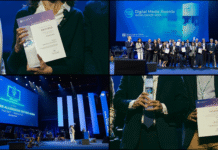Dear Mr Ashokan and other industry colleagues, The Times of India of 2 August 2014 carries a story by Koutenya Sinha about a collection of rare Indian books that cover a 250 year span of printing in India. The set of 125 books collected over three decades by antiquarian collector John Randall in Britain date back to the setting up of the first printing press in the subcontinent in the early 1700s.
The valuable collection includes the Biblia Damulica, the first biblical translation printed using an Indian font in 1715, Halhed’s A Grammar of the Bengal Language, issues of the Indian Gazette newspaper from 1783, Gilchrist’s first dictionary of Urdu from 1787 and Allan Octavian Hume’s own copy of his Hindi translation of the Indian Penal Code in 1861. The collection contains copies of The Literary Star the first Indian newspaper for women and the first to be edited by a woman, the first book on human anatomy in an Indian language from 1849 and the Haft qulzum, the Raja of Oudh’s dictionary printed by his Royal Lucknow Press in 1822.
According to the TOI story, the collection contains more than 50 first issues of The Harijan, Mahatma Gandhi’s English language weekly published in 1933. Contributors to The Harijan apart from Gandhi himself included Rabindranath Tagore, BR Ambedkar and C Rajagopalacharia. There are as well, eighteen original posters of the freedom movement from 1930, the first English language edition of Rabindranath Tagore’s The Parrots Training, a satire on education and the original 1873 founding document for the college that eventually became Aligarh Muslim University.
Randall has said in the TOI interview that he would prefer that the collection is acquired and repatriated by the
Indian government – “There is no museum or foundation focussing on the history of printing in India which has contributed so much to India as she is today.” Asked about the price, Randall is quoted on the TOI website as saying, “Around £500,000, this is substantially less than the individual values of the books if sold separately.” (In the TOI print article the price of the collection is given as $84,146 – perhaps a classic typo!)
The real issue, Mr. Ashokan and esteemed colleagues in the industry is
this — there is no foundation or museum on the history of printing in India. This is a task that could be usefully undertaken by industry bodies not only by examining and perhaps purchasing Mr. Randall’s collection but also by acquiring other volumes and exhibits such as the Indian script type catalogs produced by pioneering foundries such as Nirnaya Sagar, Mouj and Gujarati Type Foundry. A suitable exhibit of nationalist newspapers and even documents considered seditious by the British is also in order. Until suitable accommodation can be found for the acquisition, collection and curation activity, the industry could raise money to house these befittingly in an existing
institution such as The Asiatic Library in Mumbai.


















